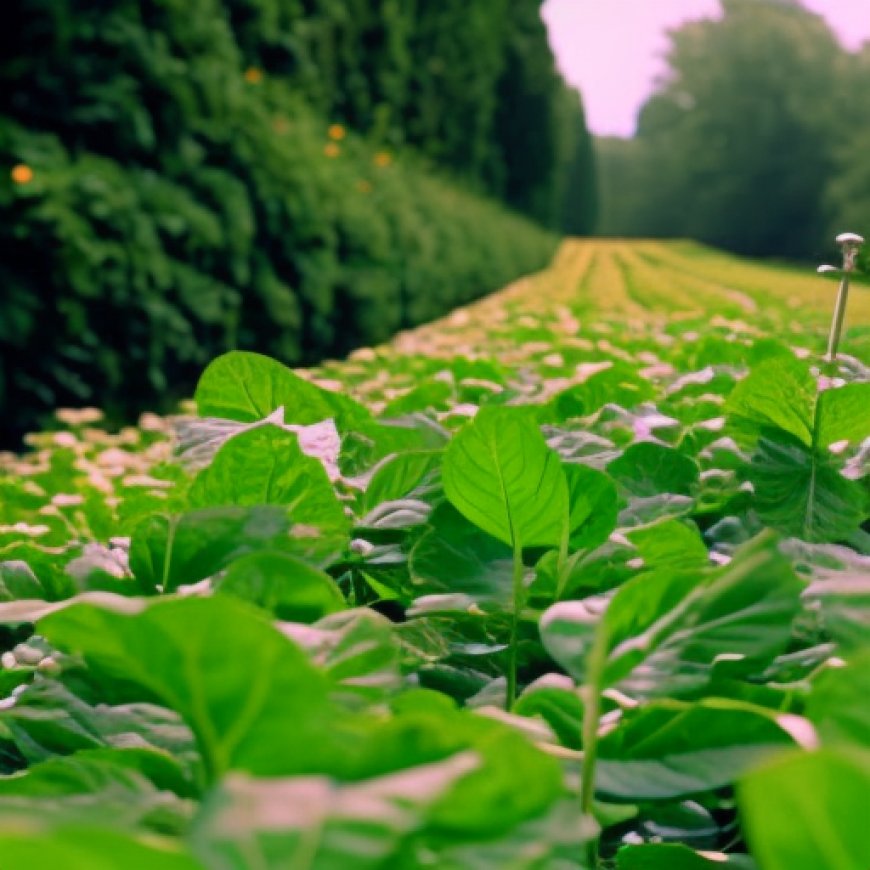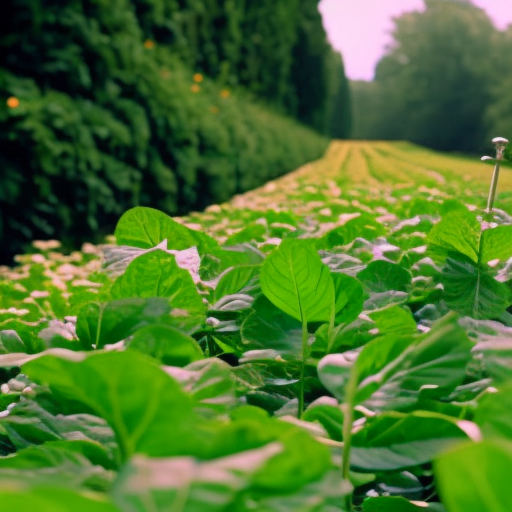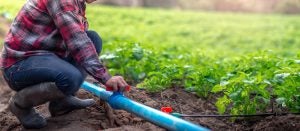The double-edged sword of diversifying agricultural systems | AGDAILY
The double-edged sword of diversifying agricultural systems AGDAILY


Study Shows Promoting Crop and Livestock Diversity Can Provide Social and Environmental Benefits
A new study published in the journal Science highlights the importance of promoting crop and livestock diversity and soil conservation strategies for social and environmental benefits. The researchers from Denmark’s University of Copenhagen suggest that well-designed policies to incentivize the adoption of multiple diversification strategies can help mitigate the negative effects of “simplified” agriculture.
The Negative Effects of Simplified Agriculture
- Simplified agriculture, characterized by intensively managed monocultures, has detrimental effects on biodiversity and pollution.
The study titled “Joint environmental and social benefits from diversified agriculture” states that agricultural diversification is a promising win-win strategy for providing social and environmental benefits.
Agricultural lands are often simplified ecosystems designed to efficiently produce specific crops or livestock. Simplified systems have advantages such as cost reduction and increased efficiency. However, the transformation of landscapes towards simplified agriculture, especially in developing regions, contributes to increased use of synthetic chemicals and water, greenhouse gas emissions, and biodiversity loss.
The Role of Diversified Agriculture in Sustainable Food Production
- Biologically diversified farming approaches, which intentionally increase the number of agricultural and nonagricultural crop and livestock species, enable sustainable food production.
While the biodiversity benefits of agricultural diversification are widely recognized, the social outcomes, such as yield and labor, are limited. This leads to tradeoffs between social and environmental outcomes in agricultural diversification, particularly in the United States.
Positive Outcomes of Diversification Strategies
To better understand the potential tradeoffs and synergies of diversified agriculture, Laura Vang Rasmussen and colleagues conducted a study examining multiple environmental and social outcomes resulting from various agricultural diversification strategies.
- Diversification strategies focused on livestock diversification and soil conservation led to positive social outcomes, including human well-being and food security.
- These strategies also resulted in positive environmental outcomes, such as biodiversity and ecosystem services.
- Applying multiple diversification strategies together created more positive outcomes than individual strategies alone.

The Challenges and Limitations of Diversified Agriculture
Diversification requires a unique set of skills, knowledge, and resources that not all farmers possess. Managing a diversified agricultural system can be complex and labor-intensive. Farmers need to deeply understand multiple species and their interactions, which can be challenging to manage effectively.
Economic viability is another factor to consider. Diversifying agricultural systems may not always be economically viable, especially for small-scale farmers. Introducing new species or practices can require additional infrastructure, training, and equipment investment, which may not always be feasible.
While agricultural diversification offers promising solutions to the environmental and social challenges of modern farming, it is not a one-size-fits-all approach. The potential benefits and limitations of diversification need to be carefully considered and managed.
As we strive towards sustainable agriculture, it is crucial to approach diversification with a balanced perspective, acknowledging both its potential benefits and pitfalls.
SDGs, Targets, and Indicators Analysis
1. Which SDGs are addressed or connected to the issues highlighted in the article?
- SDG 2: Zero Hunger
- SDG 3: Good Health and Well-being
- SDG 6: Clean Water and Sanitation
- SDG 12: Responsible Consumption and Production
- SDG 13: Climate Action
- SDG 15: Life on Land
The issues highlighted in the article are connected to several SDGs. The focus on promoting crop and livestock diversity, soil conservation strategies, and sustainable food production aligns with SDG 2 (Zero Hunger) and SDG 12 (Responsible Consumption and Production). The negative effects of simplified agriculture on biodiversity, pollution, synthetic chemical use, water consumption, greenhouse gas emissions, and biodiversity loss are relevant to SDG 3 (Good Health and Well-being), SDG 6 (Clean Water and Sanitation), SDG 13 (Climate Action), and SDG 15 (Life on Land).
2. What specific targets under those SDGs can be identified based on the article’s content?
- SDG 2.4: By 2030, ensure sustainable food production systems and implement resilient agricultural practices that increase productivity and production, that help maintain ecosystems, that strengthen capacity for adaptation to climate change, extreme weather, drought, flooding, and other disasters, and that progressively improve land and soil quality.
- SDG 12.6: Encourage companies, especially large and transnational companies, to adopt sustainable practices and to integrate sustainability information into their reporting cycle.
- SDG 13.3: Improve education, awareness-raising, and human and institutional capacity on climate change mitigation, adaptation, impact reduction, and early warning.
- SDG 15.5: Take urgent and significant action to reduce the degradation of natural habitats, halt the loss of biodiversity, and protect and prevent the extinction of threatened species.
The article’s content supports the targets mentioned above. The promotion of diversified agriculture, soil conservation strategies, and sustainable food production contributes to achieving SDG 2.4. The need to mitigate the negative environmental impacts of simplified agriculture aligns with SDG 12.6. The focus on reducing synthetic chemical use, water consumption, greenhouse gas emissions, and biodiversity loss supports SDG 13.3 and SDG 15.5.
3. Are there any indicators mentioned or implied in the article that can be used to measure progress towards the identified targets?
- Indicator for SDG 2.4: Adoption of sustainable agricultural practices, increase in land and soil quality, productivity improvements.
- Indicator for SDG 12.6: Integration of sustainability information into reporting cycles of companies.
- Indicator for SDG 13.3: Increase in education, awareness, and capacity on climate change mitigation and adaptation.
- Indicator for SDG 15.5: Reduction in synthetic chemical use, water consumption, greenhouse gas emissions, and biodiversity loss.
The article does not explicitly mention specific indicators, but the progress towards the identified targets can be measured using indicators such as the adoption of sustainable agricultural practices, improvements in land and soil quality, integration of sustainability information into company reporting cycles, increase in education and awareness on climate change, and reduction in synthetic chemical use, water consumption, greenhouse gas emissions, and biodiversity loss.
Table: SDGs, Targets, and Indicators
| SDGs | Targets | Indicators |
|---|---|---|
| SDG 2: Zero Hunger | 2.4: By 2030, ensure sustainable food production systems and implement resilient agricultural practices that increase productivity and production, that help maintain ecosystems, that strengthen capacity for adaptation to climate change, extreme weather, drought, flooding, and other disasters, and that progressively improve land and soil quality. | Adoption of sustainable agricultural practices, increase in land and soil quality, productivity improvements. |
| SDG 3: Good Health and Well-being | N/A | N/A |
| SDG 6: Clean Water and Sanitation | N/A | N/A |
| SDG 12: Responsible Consumption and Production | 12.6: Encourage companies, especially large and transnational companies, to adopt sustainable practices and to integrate sustainability information into their reporting cycle. | Integration of sustainability information into reporting cycles of companies. |
| SDG 13: Climate Action | 13.3: Improve education, awareness-raising, and human and institutional capacity on climate change mitigation, adaptation, impact reduction, and early warning. | Increase in education, awareness, and capacity on climate change mitigation and adaptation. |
| SDG 15: Life on Land | 15.5: Take urgent and significant action to reduce the degradation of natural habitats, halt the loss of biodiversity, and protect and prevent the extinction of threatened species. | Reduction in synthetic chemical use, water consumption, greenhouse gas emissions, and biodiversity loss. |
Behold! This splendid article springs forth from the wellspring of knowledge, shaped by a wondrous proprietary AI technology that delved into a vast ocean of data, illuminating the path towards the Sustainable Development Goals. Remember that all rights are reserved by SDG Investors LLC, empowering us to champion progress together.
Source: agdaily.com

Join us, as fellow seekers of change, on a transformative journey at https://sdgtalks.ai/welcome, where you can become a member and actively contribute to shaping a brighter future.







